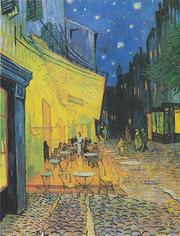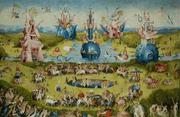Salvador Dali Persistence of Memory: Meaning of the Melting Clocks
BY K Shabi Updated 11 Oct 2021 PUBLISHED 29 May 2013
The Spanish surrealist Salvador Dali is one of the most enigmatic artists of the twentieth century. Known for his often strange and surreal subject matter, Dali's most famous work of art is The Persistence of Memory (1931), widely regarded as a masterpiece of Surrealism. What is the secret hidden meaning behind Salvador Dali's painting The Persistence of Memory and its iconic melting clocks?

The Meaning of Salvador Dali's Melting Clocks Painting
Sometimes referred to as just the "melting clocks" painting, in Dali's The Persistence of Memory (1931) a mysterious human-like white figure sleeps in an otherwise deserted landscape. A clock covers the sleeping figure's back, almost the same way a blanket might cover a sleeping child. Nearby, another clock drapes over a limb. While we usually think of clocks as hard, unbending objects, Dali's clocks are flexible, malleable things that seem to be soft, perhaps melting away in the desert sun. What do these melting clocks mean? Why are they laying out there in the sun? What is the hidden meaning?
Salvador Dali's Surrealist Art Explained: "Hand-Painted Dream Photographs"
The content of The Persistence of Memory is peculiar, but Dali paints his strange display of objects using a contrastingly straightforward artistic style and technique. Unlike the Expressionists who created art with emotive strokes and bold colors, Surrealists like Dali painted odd, often irrational subject matter unemotionally, with precise and almost photographic detail. In fact, Salvador Dali famously referred to his surrealist art as "hand-painted dream photographs."
Surrealism and the Interpretation of Dreams
The concept of the dream is integral to understanding Surrealism and also plays a key role in unlocking the secret meaning of The Persistence of Memory. For Surrealists, dreams were very important. A major goal of the Surrealist art movement was to capture visually what it is like to be in the dream state. We have all had fantastic dreams where unrelated people, places, and objects come together in inexplicable and irrational ways. Understanding that The Persistence of Memory most likely relates to and depicts a dream state is the first step in revealing the hidden meaning of Salvador Dali’s mysterious painting.
Salvador Dali Clocks Meaning
What is the meaning of the melting clocks in the painting? We use clocks in our daily lives to track the passage of time. The distorted melting clocks in The Persistence of Memory may symbolize our very different experience of time while we dream. Have you ever woken up from a long dream expecting it to be morning and are surprised to find it is still the middle of the night? In the dream state, hours can elapse in what feels like no time at all. Clocks don’t have much meaning or importance in the dream world. Perhaps it is for that reason that the clocks in Dali’s painting are melting away.
Surrealism and Humor: Persistence of Memory Meaning & Analysis
Jokes, humor, sarcasm and wordplay play an important role in Surrealist art. Are the timepieces seen in The Persistence of Memory actually clocks or are they pocket watches? Unlike wall clocks, Dali’s timepieces include the recognizable winding feature. Pocket watches were popular fashion accessories in the 1920s and 1930s, the peak of the Surrealist art movement. Surrealists often mocked the trends and fashions of middle-class society in their paintings. In The Treachery of Images (1929), also known as “This is Not a Pipe,” fellow surrealist Rene Magritte famously painted a smoking pipe, another fashionable modern accessory of the era. Perhaps Dali was similarly poking fun at the pocket watch trend in The Persistence of Memory, pointing out how useless, irrelevant, and arbitrary our modern obsession with time is, inside and outside of the dream state.

Salvador Dali Soft Clocks Meaning, Einstein & Relativity
Some art history scholars believe that Dali's melting clocks may symbolize Albert Einstein's groundbreaking Theory of Relativity, a new and revolutionary idea back in the 1930s. In his Theory of Relativity, Einstein proposed a new concept of time. According to Einstein’s theory, time is a relative and complex concept that cannot be tracked with such a crude, simple gadget as a clock or a pocket watch. In The Persistence of Memory, Dali’s clocks might be melting away because they are outmoded and losing power over the world around them. Limp and increasingly ineffectual, Dali's soft clocks are old-fashioned and even impotent in a post-Einstein world.
Much analysis is given to the melting clocks in The Persistence of Memory, but the reference to memory in the painting's title adds a new layer to the overall understanding and meaning of Dali’s painting. As we all know, memory breaks down, or even rots, with time. In his autobiography, Dali explained that he was inspired to paint The Persistence of Memory after eating some "super-soft" Camembert cheese. In the painting, what looks like an assembly of ants seem to industriously eat away at the back of the red clock, almost like a piece of hard candy. Another insect lingers on the face of the clock nearby. Left exposed out in the elements, the clocks, perhaps symbolic of both time and memory, will degrade, break down and change over time. In The Persistence of Memory, Dali captures one moment of the lifelong organic process that takes place in each of our psyches.
Personal Memory: Autobiographical Meaning of The Persistence of Memory
Is there a personal and autobiographical meaning to Dali's famous painting? Art history scholars have pointed out the resemblance and similarity of this landscape to Port Lligat in Catalonia, the same region where Dali grew up. Dali himself also stated that the painting was inspired by Port Lligat. In the background, a body of water stretches out, perhaps symbolizing an ocean of memory surrounded by the sands of time. Beyond, the brown desert landscape looks barren and inhospitable. Does anybody live here? This may be the abandoned home Dali left behind and has not revisited since his youth. A watch hangs on a tree branch like laundry left on the line hung out to dry, forgotten. As Dali notes, the withered olive tree branches are not leafy or flowering, but cut back and dried out.
The Persistence of Memory Meaning: a Self Portrait?
Who is that sleeping in the foreground of the painting? On close inspection, the sleeping white figure in The Persistence of Memory boasts curious facial hair that could be interpreted as eyelashes, an eyebrow or his recognizable moustache. Is that in fact Salvador Dali? An almost fetal figure absurdly sporting a full moustache, this strange being does not seem to be fully formed, and is left noticeably wispy at the edges by the artist. Painted when Dali was just twenty-seven years old, this amorphous figure may represent his view of himself as a young artist, caught in a perpetual state between childhood and adulthood, innocence and experience, birth and death.
Salvador Dali Persistence of Memory Meaning Explained: Salvador Dali's Melting Clocks
The Persistence of Memory is arguably Dali’s most famous painting. Its iconic "melting clocks" have become an icon of Surrealism and one of the most recognizable pieces of art of the twentieth century. While the painting's true secret meaning is uncertain, Salvador Dali most likely knowingly encrypted all of these layers of historical, psychological, artistic, social and autobiographical meaning into his mysterious, enduring work of art. There may be even more layers of meaning hidden in The Persistence of Memory that we haven't found yet.
Image credit: Salvador Dali. (Spanish, 1904-1989). The Persistence of Memory. 1931. Oil on canvas, 9 1/2 x 13" (24.1 x 33 cm). © Salvador Dali, Gala-Salvador Dali Foundation/Artists Rights Society (ARS), New York. Photograph taken in 2004.







